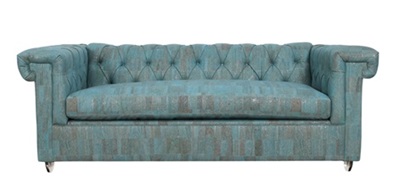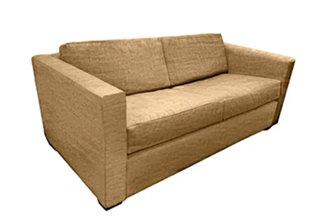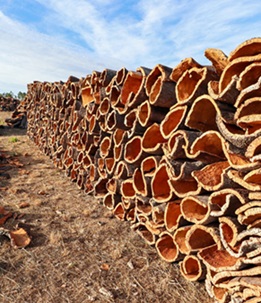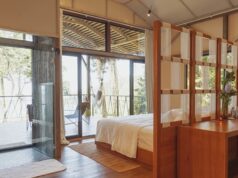
NATIONAL REPORT—Most known for use in items ranging from wine bottles to bulletin boards to flooring, cork is beginning to find a home in hospitality as cork leather. Cork leather can be used to upholster furniture, as wallcovering, or in other design features such as room dividers and offers a much more favorable sustainability story than traditional leather.
“The concept of cork leather comes out of the apparel and accessories markets,” says Sustainiture’s Steve Sechrest. “It is brand new to the hospitality world.” Sustainiture is the U.S. distributor for PortugaliaCork’s Suberise Cork Leather.
TFS Natural Home’s Suzanne Diamond says her company offers cork leather and has used it on furniture and has begun to work on both hotel and restaurant projects using the material.
With the feel of suede but much lighter and more breathable, cork leather is biophilic and its natural grain pattern shows through—more or less so depending on the color and style selected. If offers a long list of favorable qualities.

“It is waterproof, scratch-resistant, stain-resistant, flame-resistant and there are no petrochemicals in it,” Diamond says. “It sews and upholsters beautifully. Our customers like its cleanability.”
“It does not puddle or wrinkle,” Sechrest adds. “It is going to wear exponentially longer than leather. It tests past 100,000 double-rubs. It is a perfect surface to print on and provides many opportunities to do custom pieces. It is available in a wide variety of textures, patterns, and colors, and one can even add metallic highlights.”
From a wellness standpoint, cork leather offer anti-static and hypoallergenic qualities, allowing it to be in safe contact with skin.
Cork leather comes with a backing that is not glued on but attached using a vulcanization process. Suberise Cork Leather, for example, offers five different backings—one being a polycotton and another 100 percent cotton. “The backing depends on the use case,” Sechrest says.

Where Cork Comes From
Portugal is the world’s largest producer of cork. Cork is the bark of the cork oak tree and will regenerate after harvest. Harvesting the cork helps increase the trees’ lifetime expectancy and the natural ecosystems where trees grow. Harvesting is done every seven to 10 years. In between harvests the cork trees are a carbon sink removing CO2 from the atmosphere. It is estimated that every year cork oak forests retain up to 14 million tons of CO2. There is no waste with the cork tree.
The acorn, its fruit, serves as food for other animals, to further seed new trees, and to produce culinary oil. Moreover, the leaves can be used as natural fertilizers and fodder for the animals.
The tree’s pruning results in vegetal coal and wood, useful for many immediate communities and post-processed products. The cork tree oils also find an interesting application through its chemical properties, such as for natural beauty products. Cork leather is used by brands such as Nike and Prada and as many as eight luxury car companies are planning to add cork to their vehicles. A Washington Post article this week highlighted cork’s use as insulation in homes and electric cars.
Glenn Hasek can be reached at greenlodgingnews@gmail.com.






